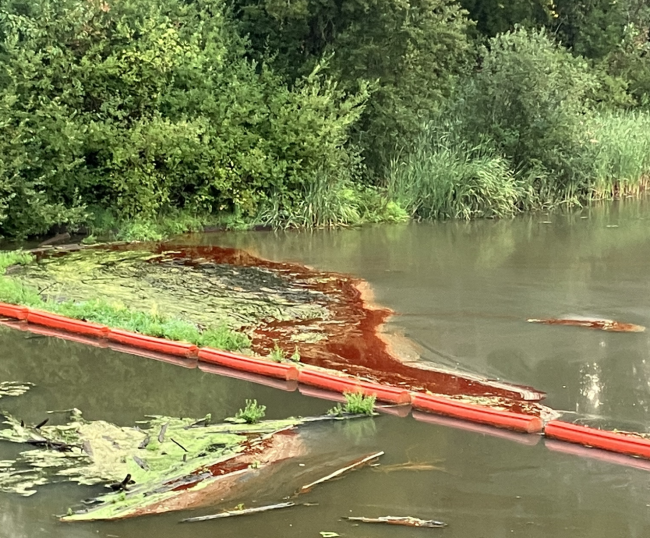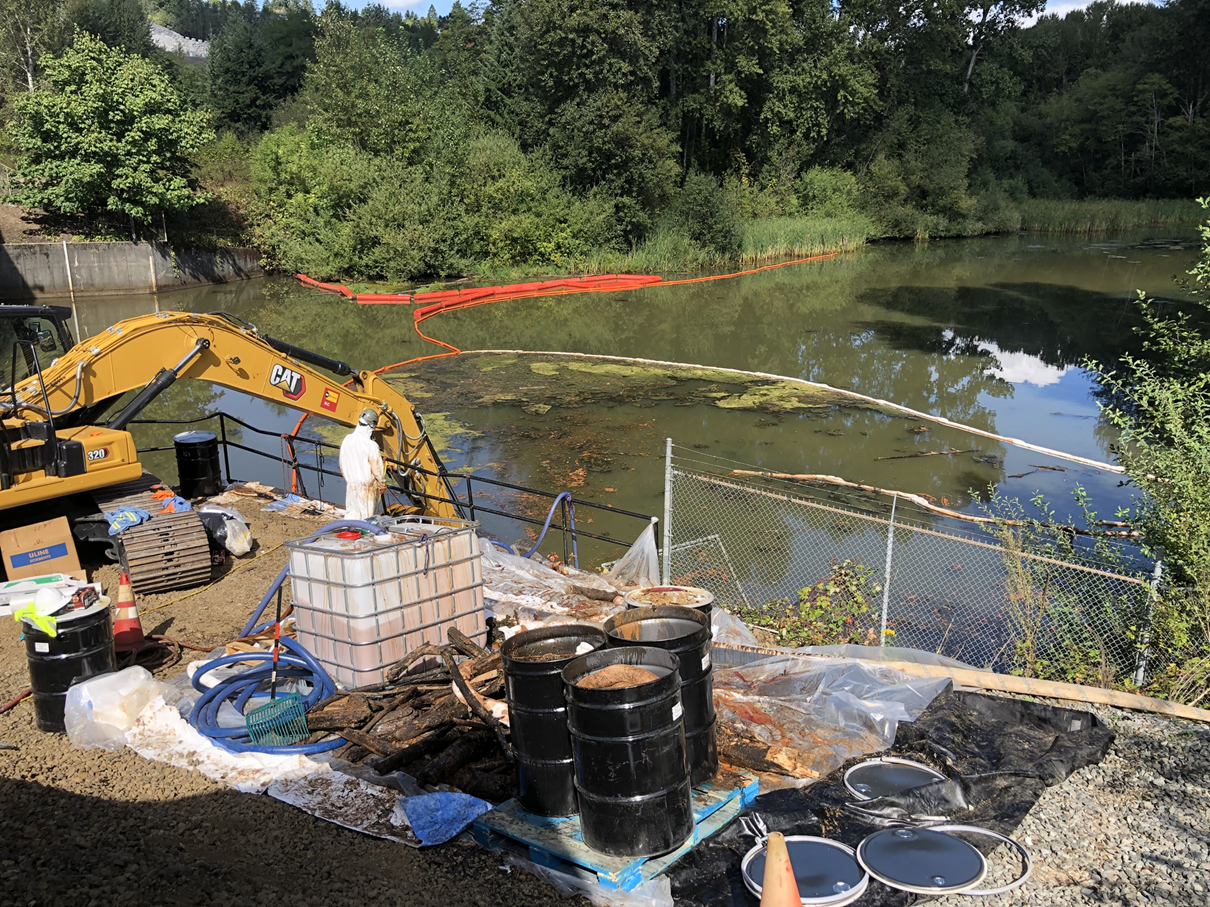Every month, OR&R’s Emergency Response Division provides scientific expertise and services to the U.S. Coast Guard, ranging from running oil spill trajectories to estimate where a spill may spread; to identifying possible effects on wildlife and fisheries; to estimating how long oil may stay in the environment. We also get requests to track and model other floating objects, such as log booms or shipping containers that have broken free, whale carcasses, fish die-offs, and algal blooms.
So far this year, OR&R has provided support for 122 incidents. During September 2023, OR&R provided response support for 18 incidents, including eight new incidents in seven different states.
The new incidents included five oil spills, two chemical releases from industrial fires, and one monitoring request for a harmful algal bloom.
OR&R staff prepared 59 new incident reports and documents, including one fate and trajectory analysis. Cumulatively, these incidents posed an approximate risk of more than 21,000 gallons of oil and an unknown amount of chemicals.
(Note: All spill volumes are approximate and based on initial information that may be updated after further investigation.)
Here are some of September’s notable incidents:
Spill of Diesel from Tanker Truck into Slough
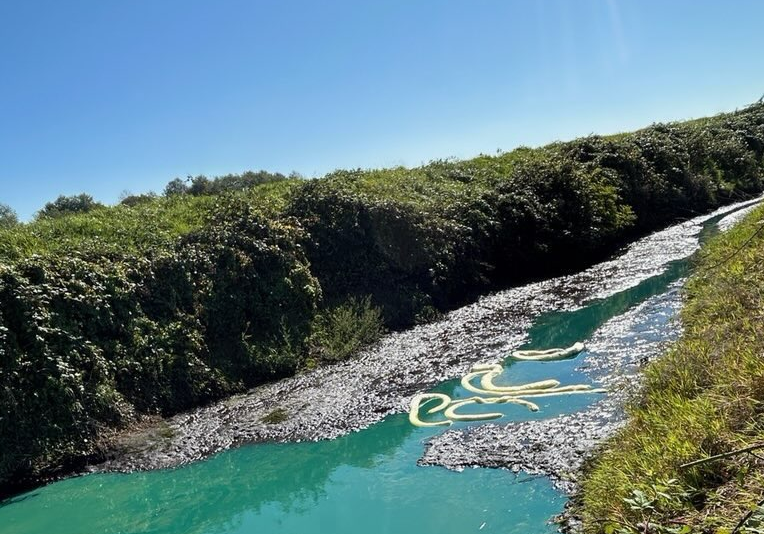
On the morning of September 8, 2023, a truck drove off after refueling at a timber company in Everett, Washington, with the fuel pump nozzle still attached. This caused an estimated 3,000 gallons of diesel to spill to ground, storm drains, and into a wide ditch next to the property.
Approximately 2,000 gallons of diesel were released into a tributary of Union Slough, but the spill was contained by a gate system that was closed. Containment boom was stretched across the ditch, along with sausage boom to contain and collect as much diesel as possible.
A number of teams responded to assess the impacts of the spill: Washington State Department of Ecology (WA ECY), the responsible party, NOAA OR&R’s Emergency Response Division, and the Environmental Protection Agency (EPA). The U.S. Coast Guard and nearby tribes were also notified given their proximity to the impacted area.
The NOAA scientific support coordinator (SSC) provided discussion on diesel weathering and fate properties, response methods, and environmental impacts. The responsible party deployed various types of booms to control the spill and hired a contractor to remove oil from the tributary. EPA and WA ECY have been monitoring oil removal operations, with WA ECY serving as the lead agency. Sorbents have been placed in the ditch to continue collecting the spilled fuel.

Spill of Cooking Oil into River
On August 30, 2023, approximately 450 gallons of cooking oil was released upriver of the Black River Pump Station in Renton, Washington. A number of agencies participated in this State-led response, including the Washington Department of Fish & Wildlife (WDFW) and WA ECY, NOAA OR&R, NOAA Fisheries, and U.S. Fish and Wildlife Service (USFWS) as well as a contractor hired to coordinate the clean-up.
There was considerable concern for oiled wildlife and vegetation, as well as low dissolved oxygen in the water. WA ECY contacted the NOAA SSC for advice on Shoreline Cleanup Assessment Technique (SCAT) and cleanup recommendations and endpoints; NOAA Fisheries’ advice on salmon migrations; as well as the OR&R Assessment and Restoration Division (ARD) for concerns of downstream oiling in Duwamish River restoration sites. The SSC also shared information NOAA has prepared on responding to non-petroleum oils (pdf) and new research on the chemistry of non-petroleum oils.
The NOAA SSC joined responders from WA ECY and USFWS to conduct a shoreline SCAT along the river bank, noting oiling and wildlife, and taking dissolved oxygen measurements. As part of cleanup operations, the contractor used manual removal and a crane bucket loader to skim the oil off of the surface to recover collected oil near the pump station and fish ladder.
The Black River Pump Station fish ladder feeds into the impacted area in the river, so the ladder and pump station were closed until WDFW, working with federal and state trustees, determined clean-up conditions had been met in order to reopen it. The fish ladder was re-opened on September 22, prior to heavy rain events that triggered salmon migrations. The source of the cooking oil remains unknown, but is under investigation.
Tug Sunk in Slough
On September 4, the Tug Mazapeta (a 1940’s-era U.S. Navy tugboat, recently undergoing private renovation) sank to the bottom, becoming partially submerged in Little Potato Slough, a tributary of the Stockton Deep Water Channel of the Sacramento/San Joaquin River Delta.
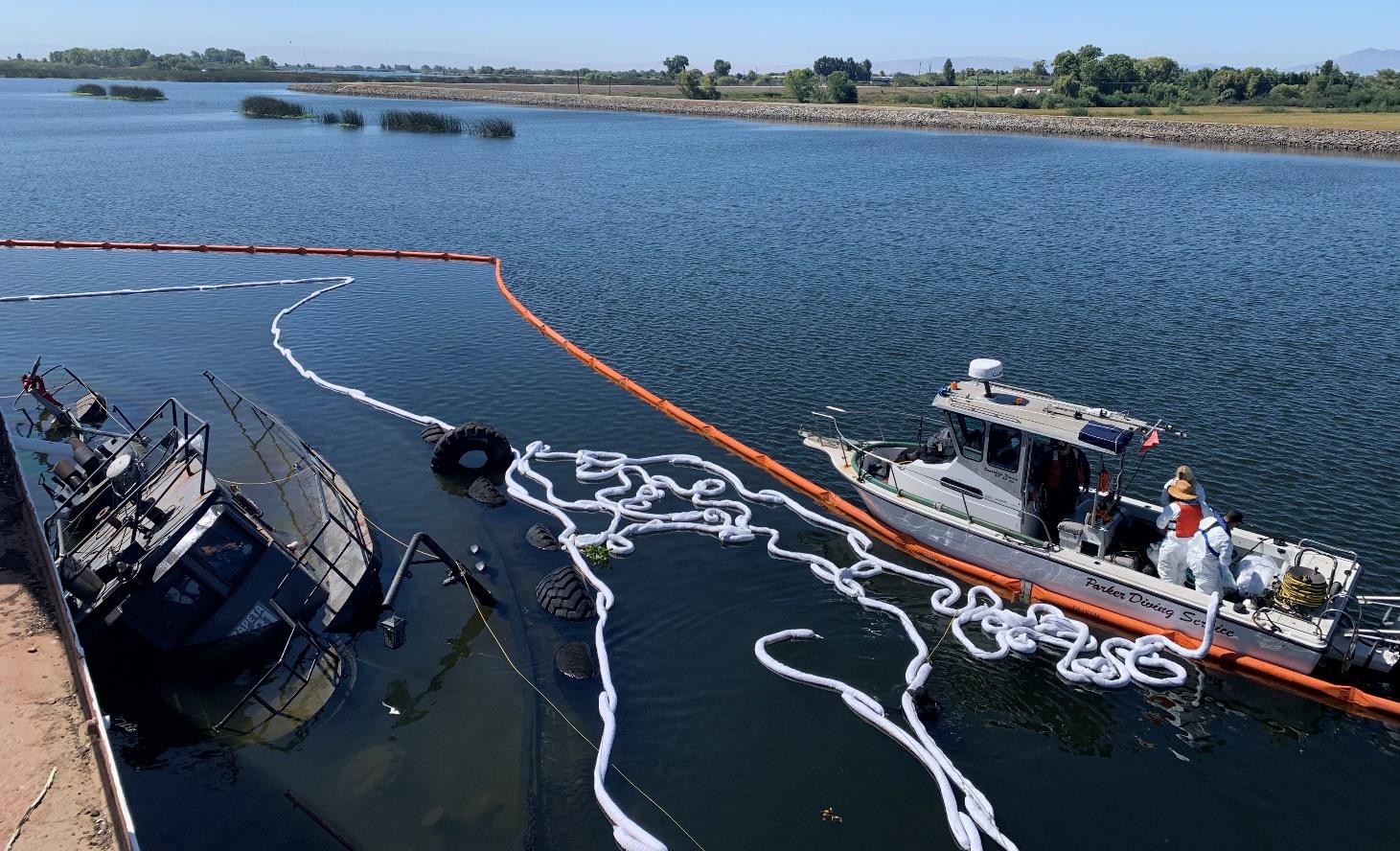
The vessel owner estimated that 1,000 gallons of diesel and 600 gallons of engine oil were onboard at the time of the sinking. Containment and sorbent boom were deployed around and within the vessel and oil-soaked sorbent materials are being recovered as a de-fueling plan is developed. The City of Stockton operates a facility in a nearby waterway and raised pollution concerns to local waterways.
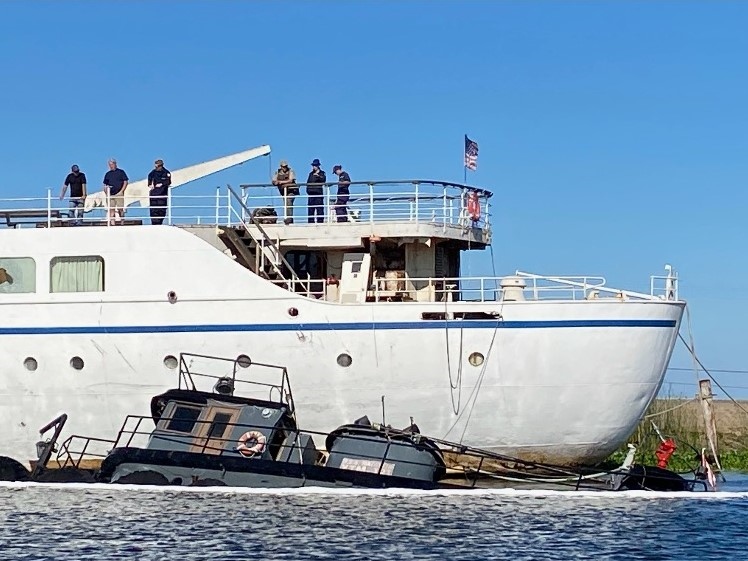
A Unified Command with representatives of the U.S. Coast Guard (USCG), California Department of Fish & Wildlife’s Office of Spill Prevention & Response (CDFW-OSPR), and the San Joaquin County Sheriff’s Office responded to the submerged vessel. The USCG continues to evaluate the status of the vessel and oversee pollution containment, removal, and response, coordinating with a contracted salvage/dive company to safely address the petroleum threat.
USCG Sector San Francisco requested oil fate/transport information from NOAA OR&R, to assist in discussions with the City of Stockton and other key stakeholders. In addition, CDFW-OSPR and the California EPA’s Office of Environmental Health Hazard Assessment determined that a fishery closure was not needed at the time. CDFW and the Oiled Wildlife Care Network also remain on standby, to assist in the event of any oil-impacted wildlife. Clean-up work is ongoing.
Here is the complete list of September’s incidents. Click on the links to find out more:
- Tug MAZAPETA Sunk; Little Potato Slough, Stockton, CA
- MV EDEN STAR Grounding; Bar Harbor, ME, USA
- Fire at Clackamas County-owned Building; Happy Valley, OR
- Red Tide Inquiry; Galveston, TX
- Overfill Spill on Vessel ATLANTIC OCEANIC; Montville, CT
- Fire at Great Lakes Tissue Company; Cheboygan, MI
- Diesel from Tanker Truck Released into Tributary of Union Slough; Everett, WA
- Cooking Oil Spill into Black River; Renton, WA

